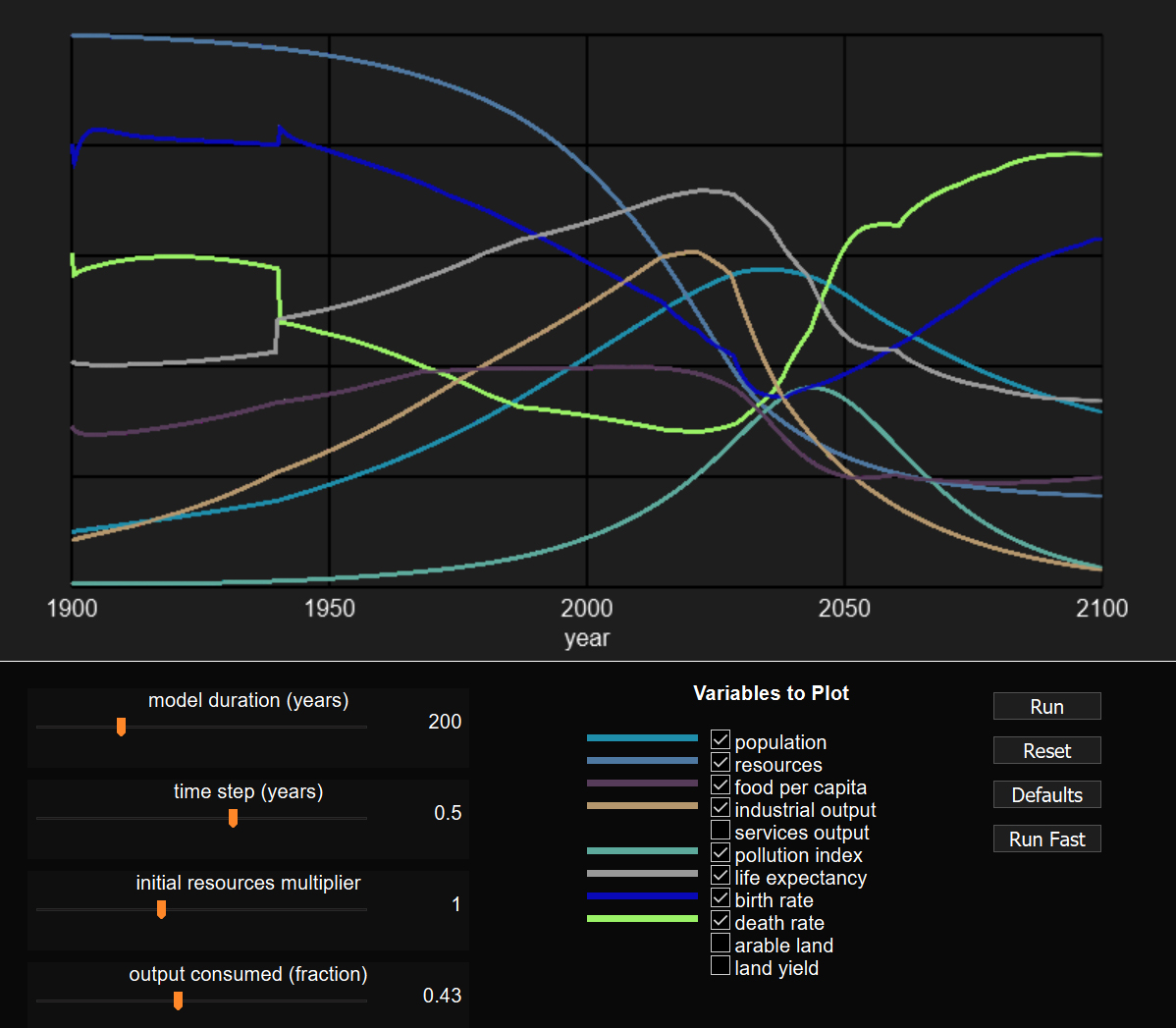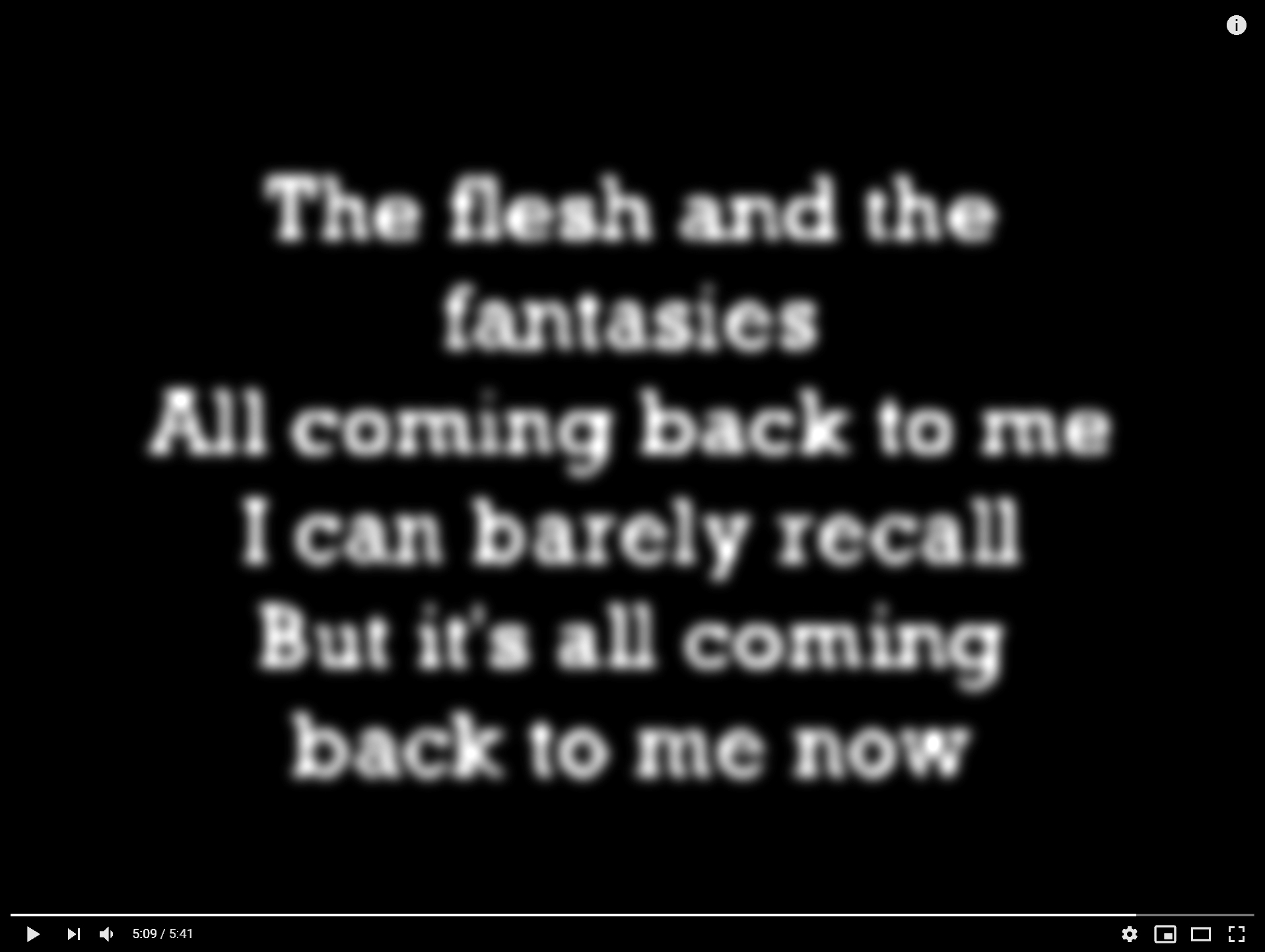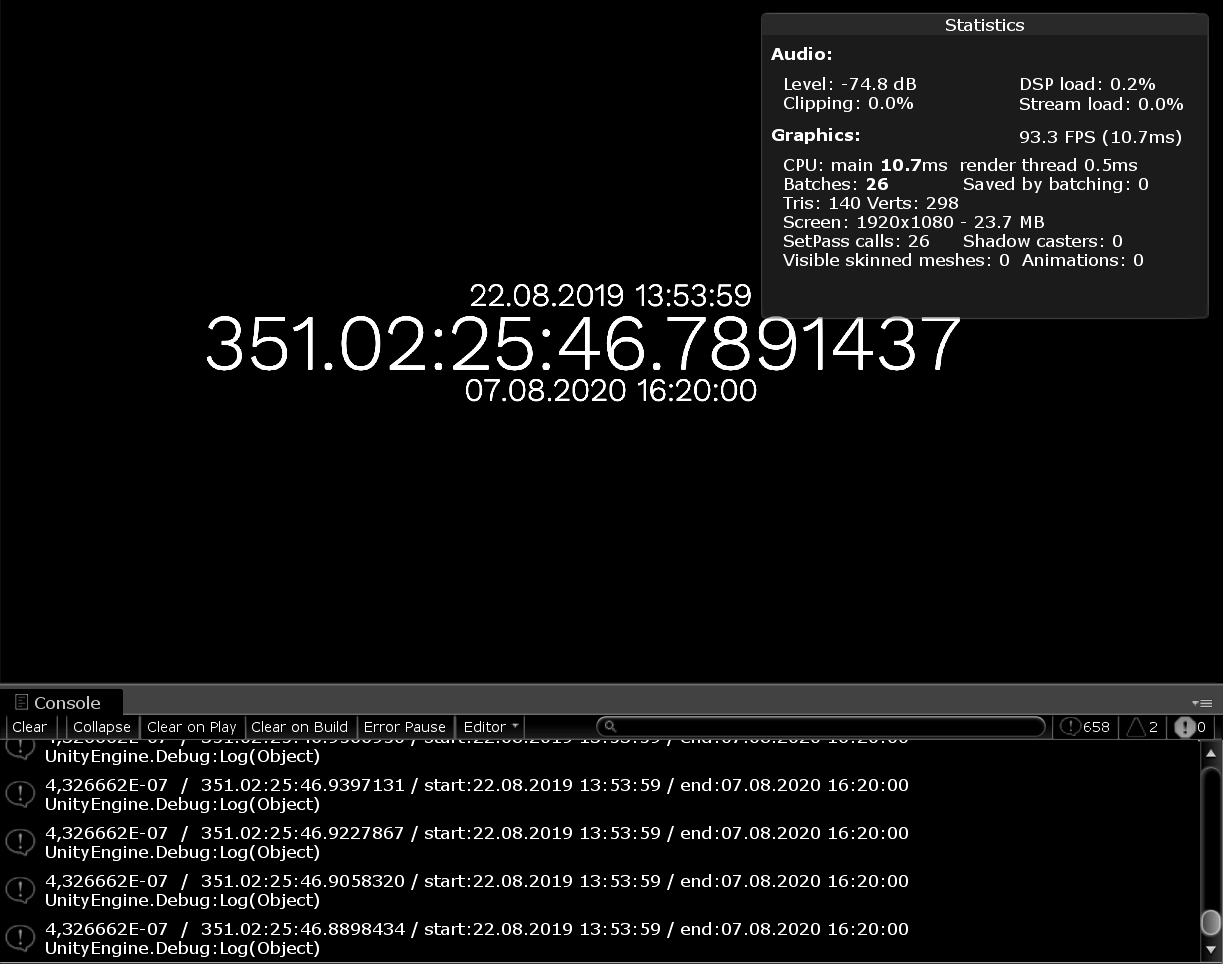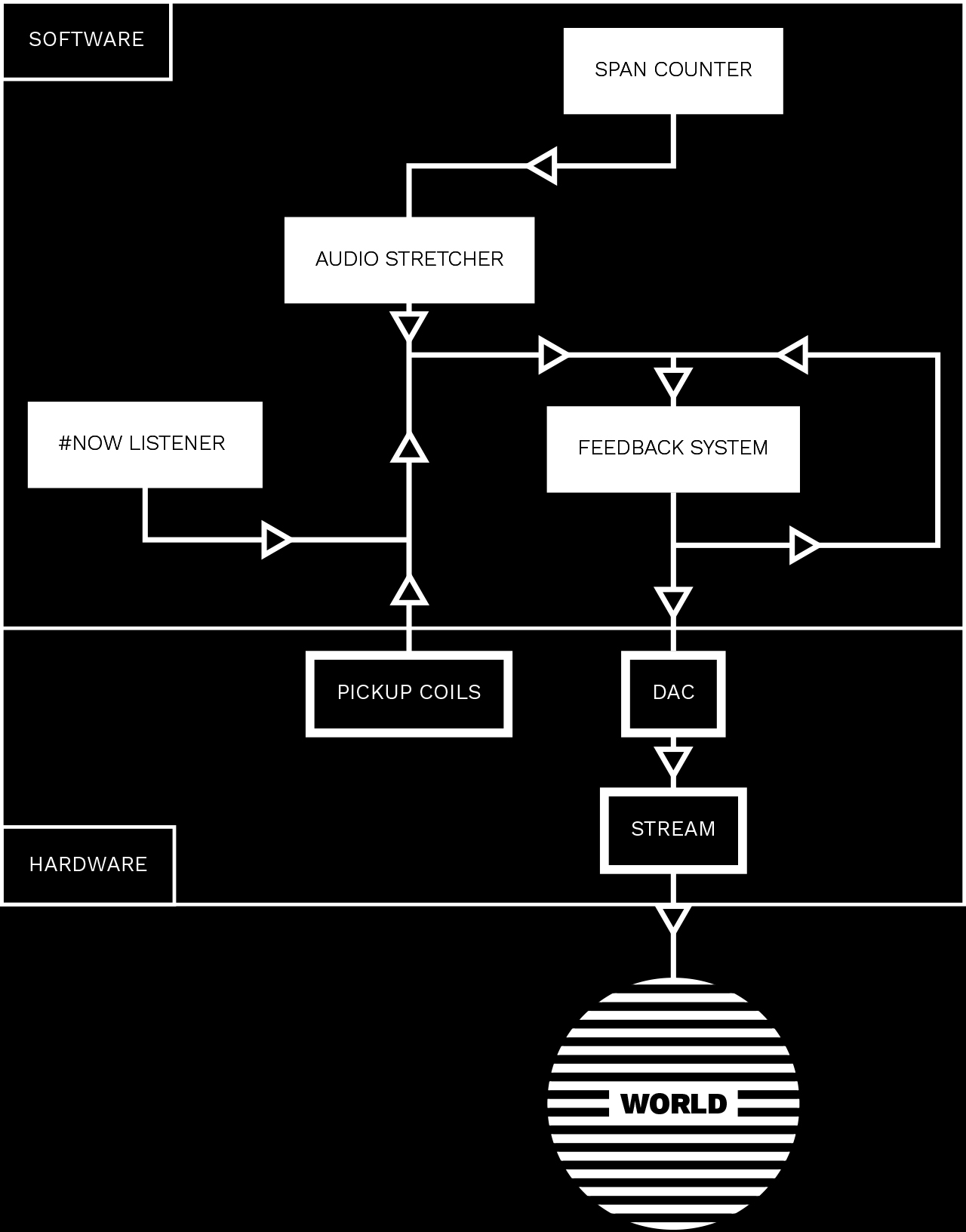INFO
FRAMEWORK
When thinking about liminal concepts, we often tend to stretch our field of interest to phases of sociocultural, economical, environmental and personal transitions. But if we pervert this way of observation quite literally, we can explore the cybernetic system, in which those phases take place, where those phases are one of many possible outputs / results. If we identify |time| as our frame of reference, we can pick out the most symmetrical, taintless and insecure location: >now>.
The Arrow’s paradox of the pre-Socratic Zeno of Elea (not the Arrow’s paradox by Kenneth Arrow) states the absurd result of what happens when you infinitely zoom in on a flying arrow in a timely manner. At every location distributed over the span of the flight the arrow rests, because otherwise it could not stay at a location. So the arrow must rest at every location possible and could not fly at any time, but overall it most certainly does move all the time while flying. This reductio ad absurdum challenged the sciences of time throughout the years and can only be solved by understanding |time| as a continuum of time and space: ~time~.
Using ~time~ we can implement the concept of >limes<. With this approach we can bend (from Indo-European: elbow) our field of observation to a structure more convenient. We can hide the>
now> behind a sphere shaped embankment, an impenetrable wall of perception. This concept seems related to the cultural use of the religious term <paradise> (from Proto-Iranian: walled enclosure). A non-place, in which we are per definition not |now|, but are (or: should be) eager to go, but have only vague assumptions of how to. In most religious concepts |time| and ~time~ are linked in one way or another to this effort, some would say: <goal|, that is always the last, infinite period, the end of all transitions and of course the end of |time| and ~time~ itself and in most cases quite similar to the point of origin.
When we take >now> and transform it to
WORLD3

So how do we live with our mind and all of its receptors focused on this very future? How does it influence our view on <now suggested above? We can not. But we can use the knowledge gained from examining <now< and <now> to generate a cybernetic system of balance: ~now~. We can discover the elaborate, high-detailed complexity of space and time in between. We can radically reduce the stream of incoming signals for the brain to compute, stretch the span of perception and thus trigger perceptual sub-functions (that only occur when given enough time and precision) to balance and stabilize ~now~ in ~time~.
INSTALLATION
The generative real-time installation ~ N O W W W W W W W W W W W W W W W W W W W W W W W W ~ adopts this framework to a durational, experimental sonic arrangement, using several small, digital and physical applications, that work together, feed and support each other to generate a constant audio stream. A 5 second long recording of the word now from Celine Dion’s 1996 hit It's All Coming Back To Me Now (money note at 5:09) is the main source of this sonic arrangement.
NOW

A counter constantly calculates the exact span between the start time and the end time (1 year later) and translates it to a floating point number between 0 and 1. In the course of 365 days this counter moves a digital playhead through this 5 second long sample at a resolution of 60hz+ and stretches the sample to roughly 31556952 seconds (1 year). This sonically magnifies the sound in between sounds and creates enormously slow oscillating harmonics.
SPANCOUNTERAPPLICATION

To insert virtual and physical implications of >now> to this sonic arrangement and therefore create the actual feedback system, every time someone uses #NOW in her/his tweets, the system opens a short window in |time| (depending on the number of characters in the tweet) for the noise of the CPU � and of other hardware components working at this very moment
SYSTEMARCHITECTURE

THOMAS WAGENSOMMERER
lives and works in Vienna, Austria. Studies of Digital Media Technology at the University of Applied Sciences St. Poelten, Philosophy at the University Vienna, Transdiciplinary Art (TransArts) at the University of Applied Arts Vienna. Works as media artist, musician and theoretician in both installative and performative ways. Lecturer for Experimental Media at the University of Applied Sciences St. Poelten. Lecturer for theory and practice of Media Art at the Vienna University of Technology. Former member of research/artistic staff at the University of Applied Arts Vienna.
Exhibitions / Performances / Participation at/in ZKM Karlsruhe, Ars Electronica Linz, Donaufestival Krems, MAK Wien, Darmstaedter Ferienkurse, OE1 Kunstradio, Medienkunstlabor Graz, Diagonale Graz, Sophiensaele Berlin, Kuenstlerhaus Wien, Vienna Independent Shorts, Galerie Krinzinger Projekte Wien, Nestroyhof Wien, Impulstanz Festival Wien, Wien Modern, Konzerthaus Wien, Tanzquartier Wien, CTM Berlin, Triennale Museum Milano, unttld contemporary Wien, Galerie Zimmermann Kratochwill Graz, Tulane University New Orleans, Festival des Cin�mas Diff�rents Paris, Festival de vid�omusique de Montr�al, Al Este De Lima, Radiokulturhaus Wien, TodaysArts The Hague, Patchlab Krakov, Lunchmeat Prague, mi*galerie Paris, Kunstraum Walcheturm Z�rich, Gare Du Nord Basel, L'Auditori Barcelona, Stadtcasino Basel, Athens Digital Arts Festival, Galerie AMU Prag, etc.
The CTM Radio Lab is an initiative by Deutschlandfunk Kultur – Radio Art/Klangkunst and CTM Festival, in collaboration with ORF musikprotokoll im steirischen herbst festival, Ö1 Kunstradio, Goethe-Institut, and The Wire magazine.